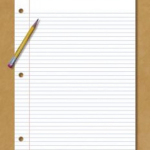Although it may state in the name that a formal letter should be formal, it is important to remember this when you are writing one. The tone of voice and the formal letter vocabulary used should be consistent so that the reader can follow what is being said more easily.
Some more advice on formal letter rules would be to make sure you look over your formal letter after you have written it, or ask someone else to do this for you, to make sure that there are no mistakes in spelling or grammar.
Formal Letter Layout
If you are looking for a brief description on what to include in your formal letter format then have a look at what is a formal letter that will provide some help. These are a few extra points to consider when writing your formal letter:
- Date: this can be placed on either side of the page and is your choice, never write the date in number format (e.g. 12/07/2016) but always with the month spelt out (e.g. 21st January, 2013)
- Salutations: opening and closing, this is important to get right according to who the letter is directed to and the formality of the letter, see formal letter vocabulary
- First paragraph: always introduce the reason you are writing, introduce yourself if necessary, keep it brief and to the point
- Last paragraph: a polite closing is necessary, encourage a response if applicable, reiterate main points, keep it brief and concise
- Sign-off: remember to put your name and contact details, add any additional information if necessary (attachments, signature…)
Have a look at our formal letter samples for further details.
-- Publicidad --
